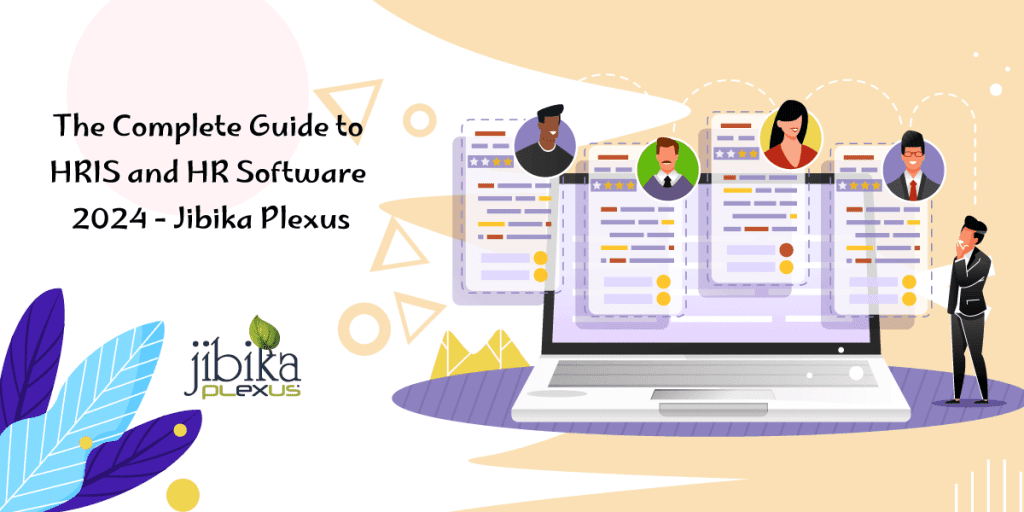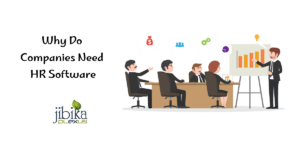HR software and human resource information systems (HRIS) have revolutionized human resource management in organizations by increasing efficiency, reducing the administrative burden, and providing compliance with labor laws. Such solutions streamline multiple areas of HR, such as recruiting, payroll processing, employee benefits, employee performance, and compliance management.
This guide walks you through everything you need to know about HRIS vs HR Software — their features, benefits, implementation strategies, and new trends. This ultimate HRIS guide will help you make informed decisions when choosing the right HRIS, whether you are a small or large organization.
What is HRIS and HR Software?
HRIS is a software system specifically developed for storing, processing, and managing information about employees. It serves as a centralized repository where HR professionals can access data like employee records, payroll information, benefits administration, and compliance tracking.
HR software refers to a broader category of digital tools that cater to multiple HR functions, such as:
- HRIS (Human Resource Information System): Deals with employee data management and administrative HR processes.
- Human Capital Management (HCM): Talent management, employee engagement, and workforce planning.
- HRMS (Human Resource Management System): An HRMS includes HRIS and HCM functions, in addition to stronger analytical and automation features.
Today, HR software solutions are available in the form of cloud-based and on-premise solutions. Cloud solutions come with flexibility, scalability, and remote access, which makes them the favorite go-to for any business, big or small.
Essential HRIS and HR Software Functionality
A feature-rich HRIS can help you streamline your HR processes and improve your workforce management. Then, there are a few must-have features:
Employee Database Management
The HRIS is the center of storing and managing your employee information, such as contact details, job history with salary, and performance history.
HCM Software For Payroll And Benefits
This automates salary processing, tax calculations, and benefits management, as well as ensuring compliance with labor laws and regulations.
Time and Attendance Tracking
Facilitate tracking of employee working hours, attendance, sick leaves, and vacations, which helps businesses maintain accurate payroll records.
Recruitment and Onboarding
Offers applicant tracking systems (ATS), job posting tools, resume screening, and digital onboarding features to simplify hiring.
Performance Management
Enables companies to assign goals, perform employee evaluations, and track individual contributions to corporate goals.
Learning and Development
It offers workforce management, online courses, and career development tracking to help you upskill your workforce.
Management of Compliance and Legal
Assists businesses in complying with labor laws by automating documentation and creating compliance reports to mitigate legal risks.
Employee Portal Self-Service (ESS)
Provides a self-service portal for employees to manage personal information such as leave and pay slips and benefits, etc.
Advanced Reporting and Analytics
Provides Human Resource reports and insights that help with decision-making, workforce planning, and HR Strategies.
Mobile Accessibility
Mobile apps are included in contemporary HR software solutions so that HR teams and employees can perform functions from any location.
Advantages of HRIS and HR Software
Improved Productivity and Efficiency
HR automation minimizes paperwork, saves time, and helps HR teams focus on strategic initiatives.
Better compliance reduces risks
HRIS makes sure that businesses remain compliant with different labor laws by automating record-keeping and tax documentation.
Data Analytics for Improved Decision-Making
You will have trends on employee performance, workforce, and operational efficiency in real-time HR software.
Cost Reduction
Data is the lifeblood of any organization, and performing the right tasks in the right way has the potential to reduce operational costs through minimizing manual errors, automating administrative tasks that hamper overall employee productivity, and enhancing workflow.
Better Employee Experience
Again, enhancing employee satisfaction and engagement scores through self-service portals, ease of access to information, and automated HR processes.
How to Select the Right HRIS for Your Business
Identify Your Business Needs
Analyze people management and process hurdles and leverage this information to invest in features best suited to your organization.
Consider Scalability
Choose a solution that can easily scale to new business or employee requirements.
Assess Integration Capabilities
The HR software must have seamless integration with payroll, accounting, and other enterprise systems.
Focus on User Experience
Choose a platform that is easy to use and has a low learning curve for both HR teams and employees.
Evaluate Customer Support and Customization
It is important then to go for a vendor that provides you with support services as well as customization options with regular software updates.
How to Successfully Implement HRIS
Involve Key Stakeholders
Influence HR managers, IT teams, and senior executives in the selection and application process.
Plan Data Migration
Initiate a smooth onboarding migration to the new system by moving employee records and HR data onboard to the system securely.
Conduct Employee Training
If the new system is implemented, then proper training should be given to HR teams and employees as well to get the most out of the new system.
Monitor Performance and Optimize
Assess how well the system is working, and improve whenever you need to.
Future Trends in HR Software
AI-based software for human resource management enhances recruitment, conducts performance reviews, and forecasts future workforce analytics.
Cloud-Based HR Systems
An increasing number of businesses are migrating to cloud-based solutions for HR due to their high flexibility, security, and scalability.
Remote Work Adaptation
HR software has virtual onboarding, digital collaboration tools, and remote performance tracking, to name a few.
Wellness and Mental Health Programs for Employees
Mental health, wellness tracking, and employee engagement features are now part of HR systems.
Personalized Employee Experience
Contemporary HR solutions leverage AI and machine learning capabilities to provide personalized learning paths, career development programs, and multi-faceted feedback mechanisms.
FAQs
Q) What is the difference between HRIS and HRMS?
Ans: While HRIS will focus on managing employee data, HRMS has a wider perspective and will also include functions such as talent management and analytics.
Q) Do small businesses have the budget for HR software?
Ans: There are many cloud-based HR solutions with price models appropriate for small and medium-sized businesses.
Q) What is the implementation timeframe for an HRIS?
Ans: The implementation time may range from weeks to months and depends on the company size and required customization.
Conclusion
HRIS and HR software are the backbone of modern businesses; if you need to operate your HR functions more efficiently, stay compliant, and keep your employees happy, this is the tool for you.
With the idea of the right HR tech and effective implementation, companies can aim for efficient people management, enhanced productivity, and long-term success.







